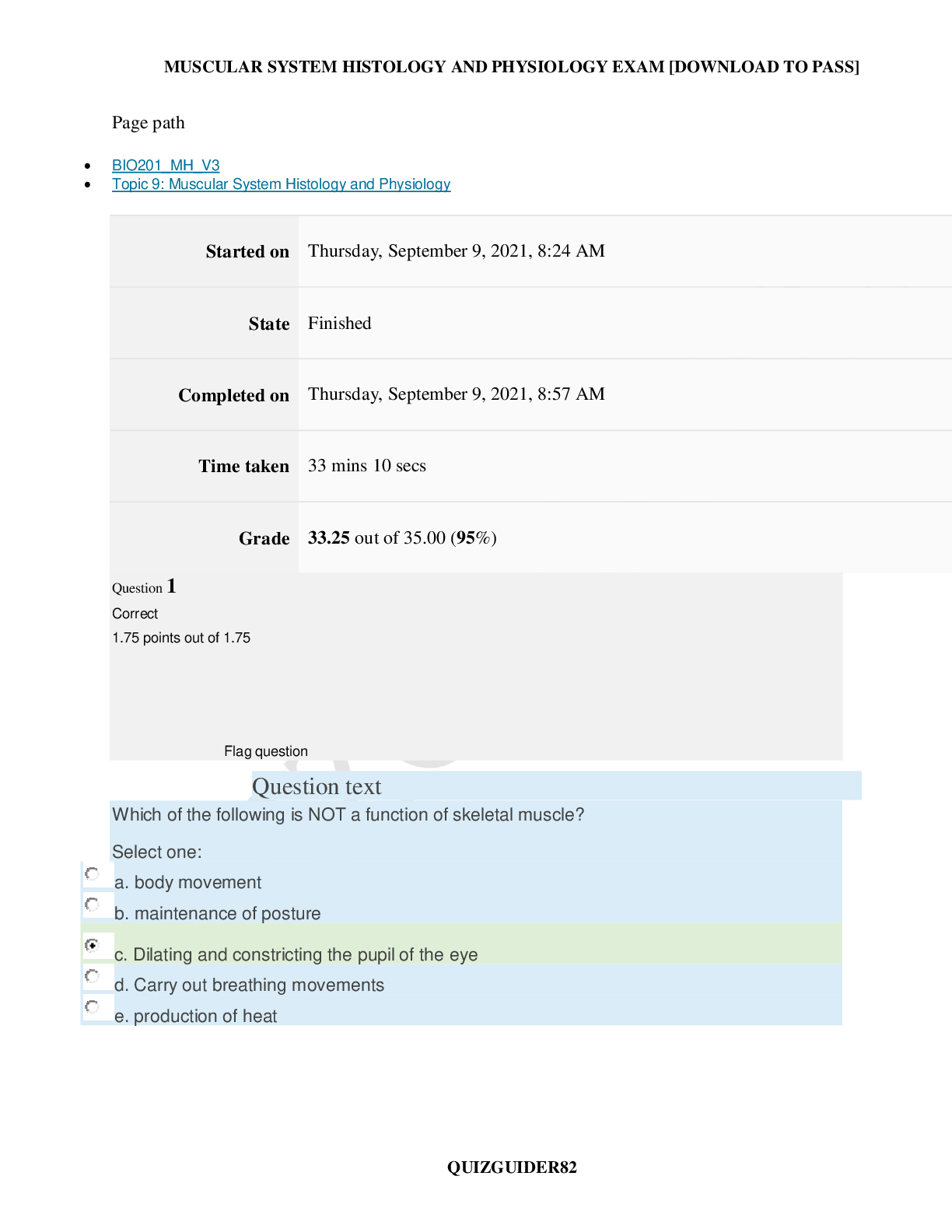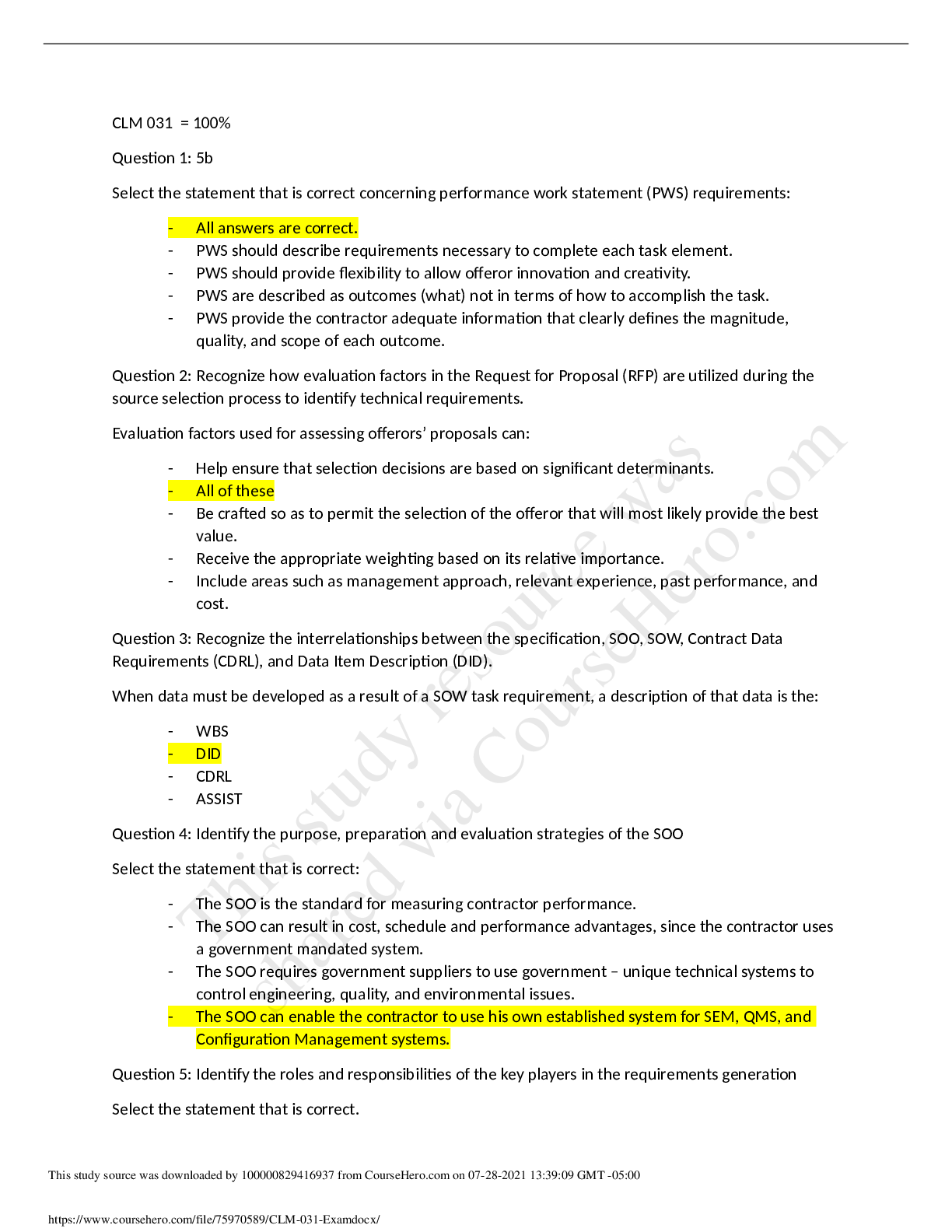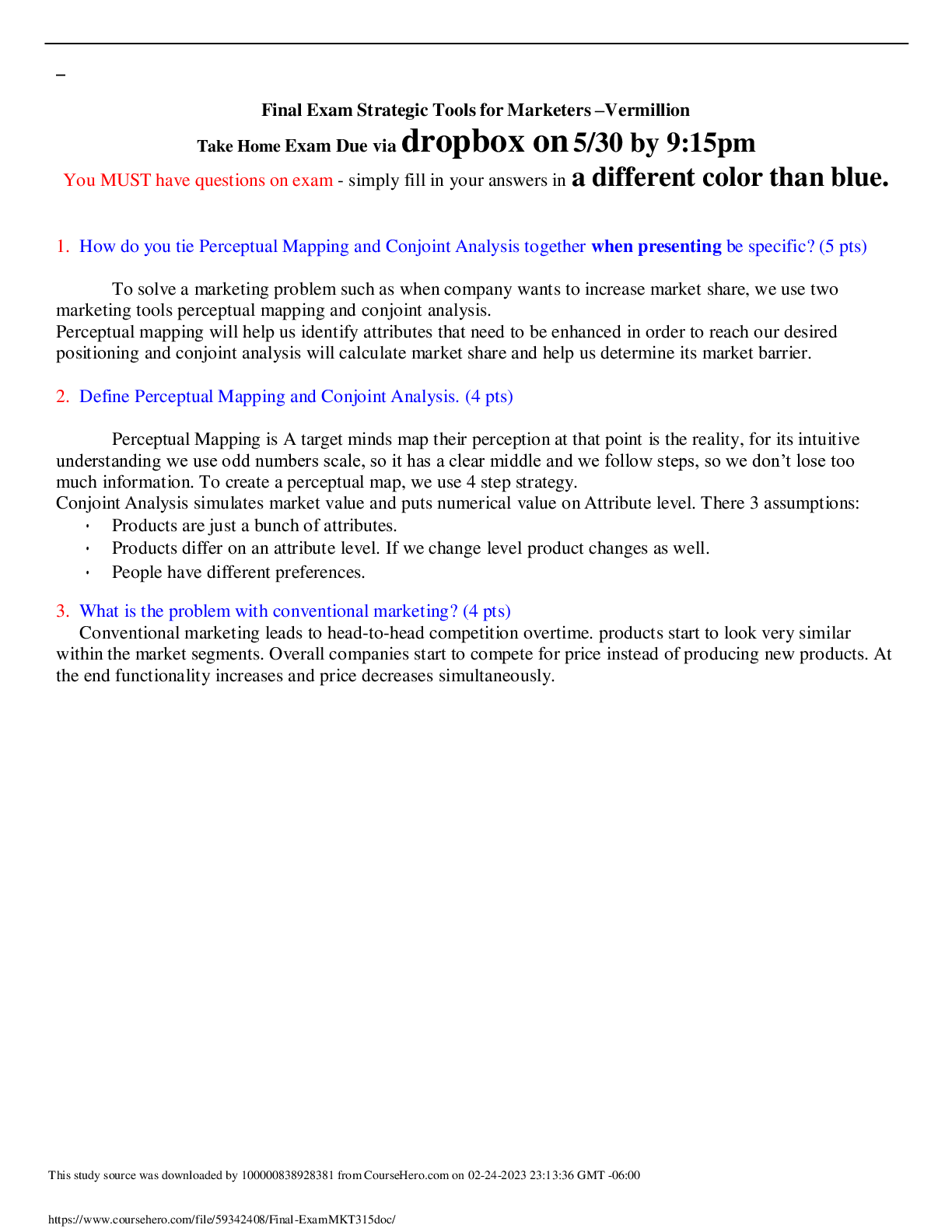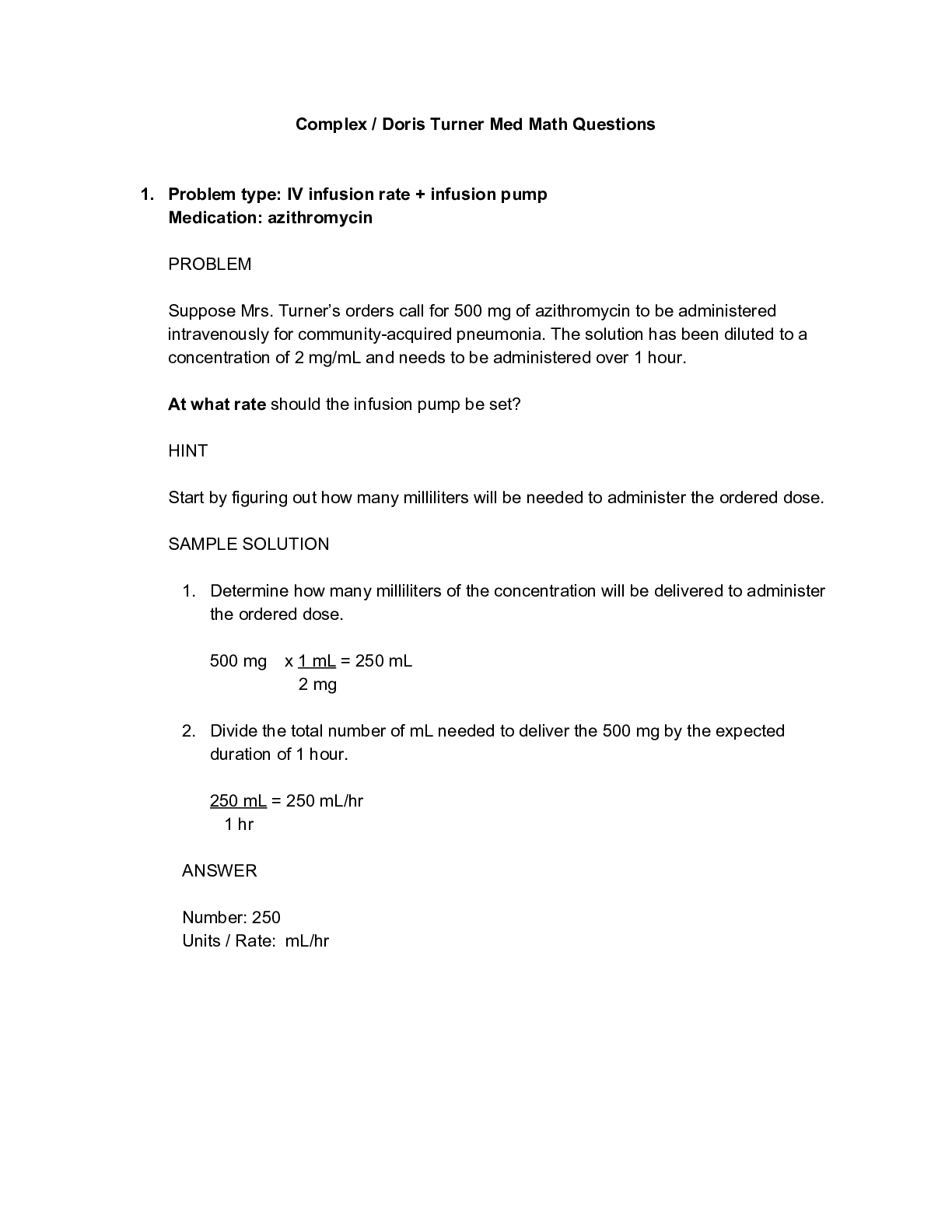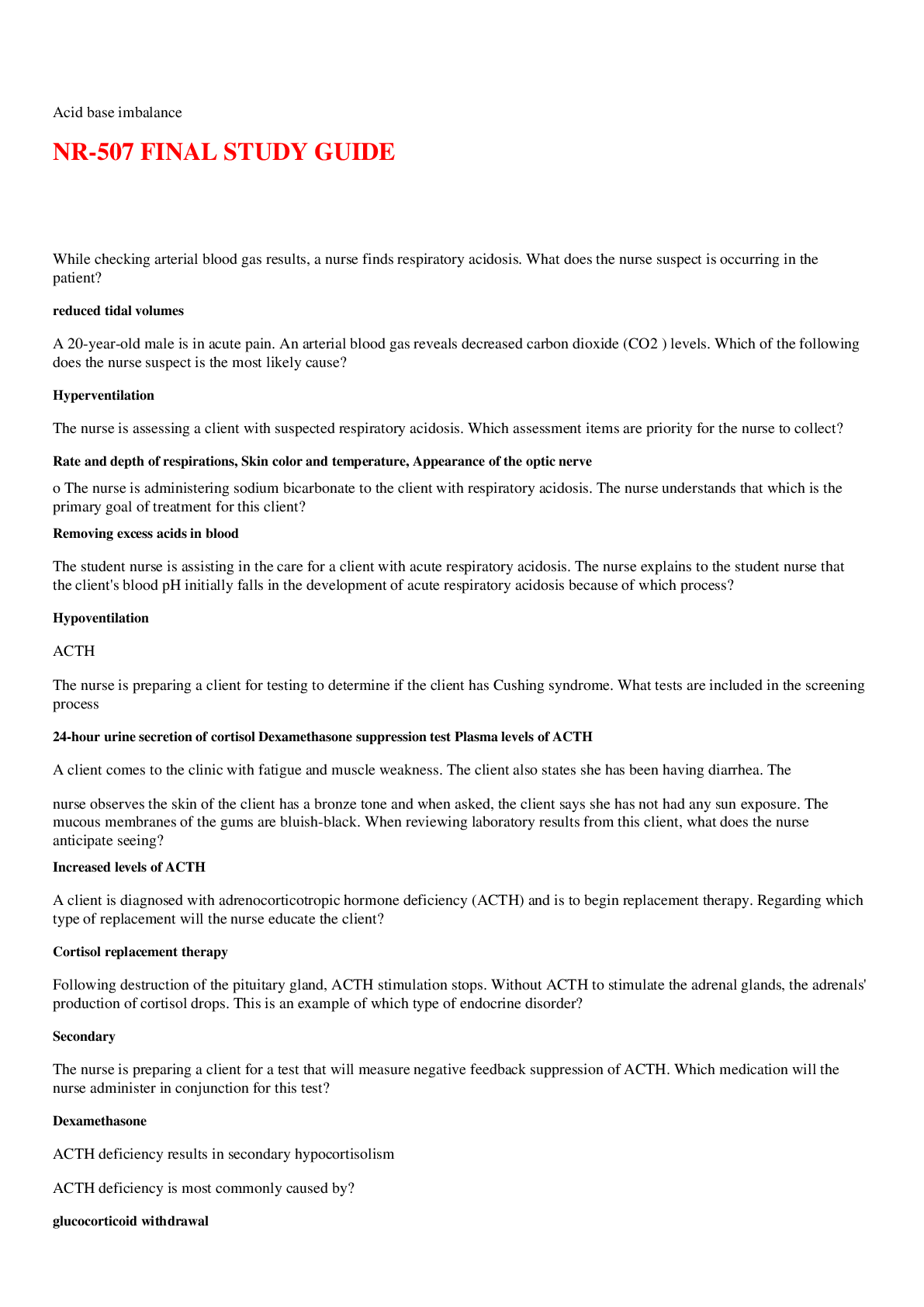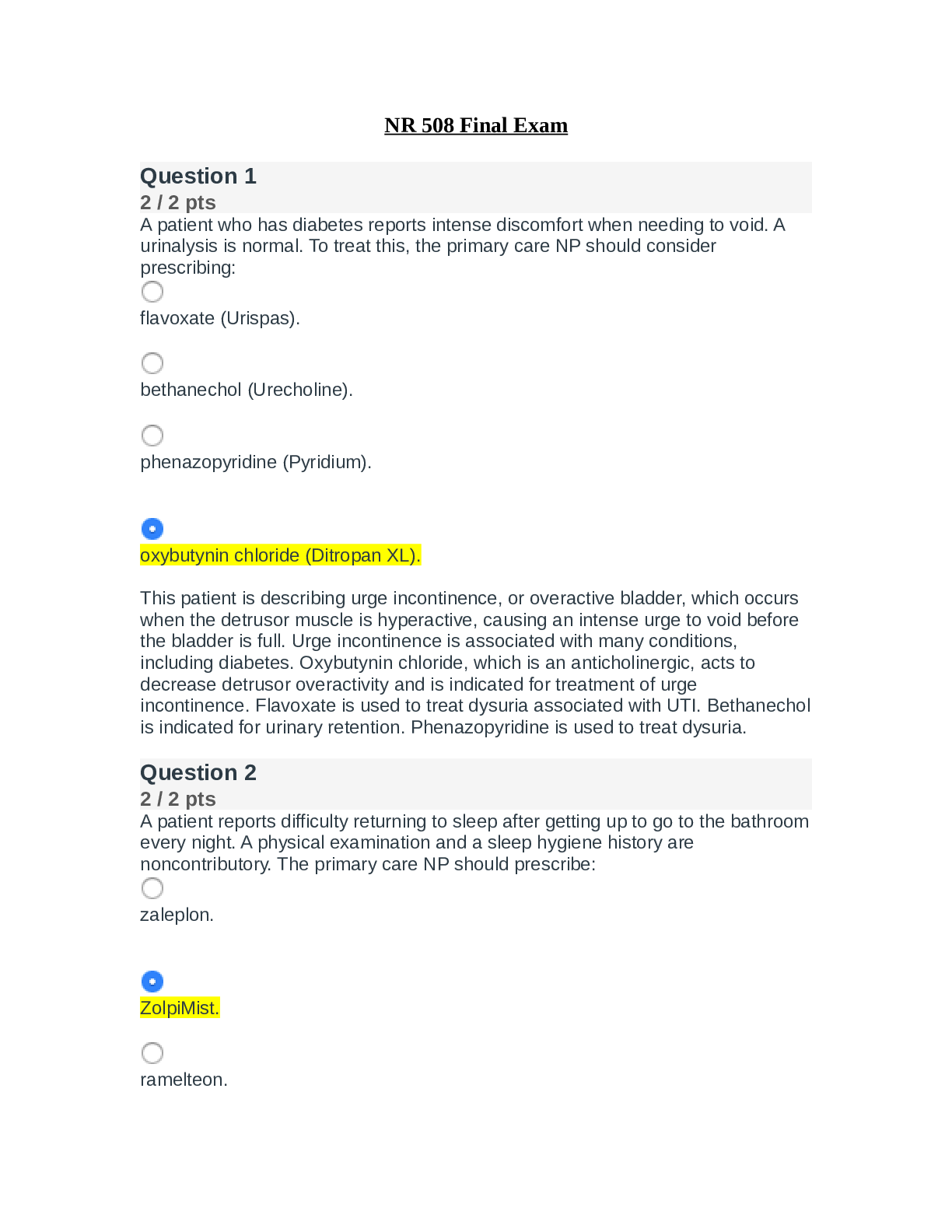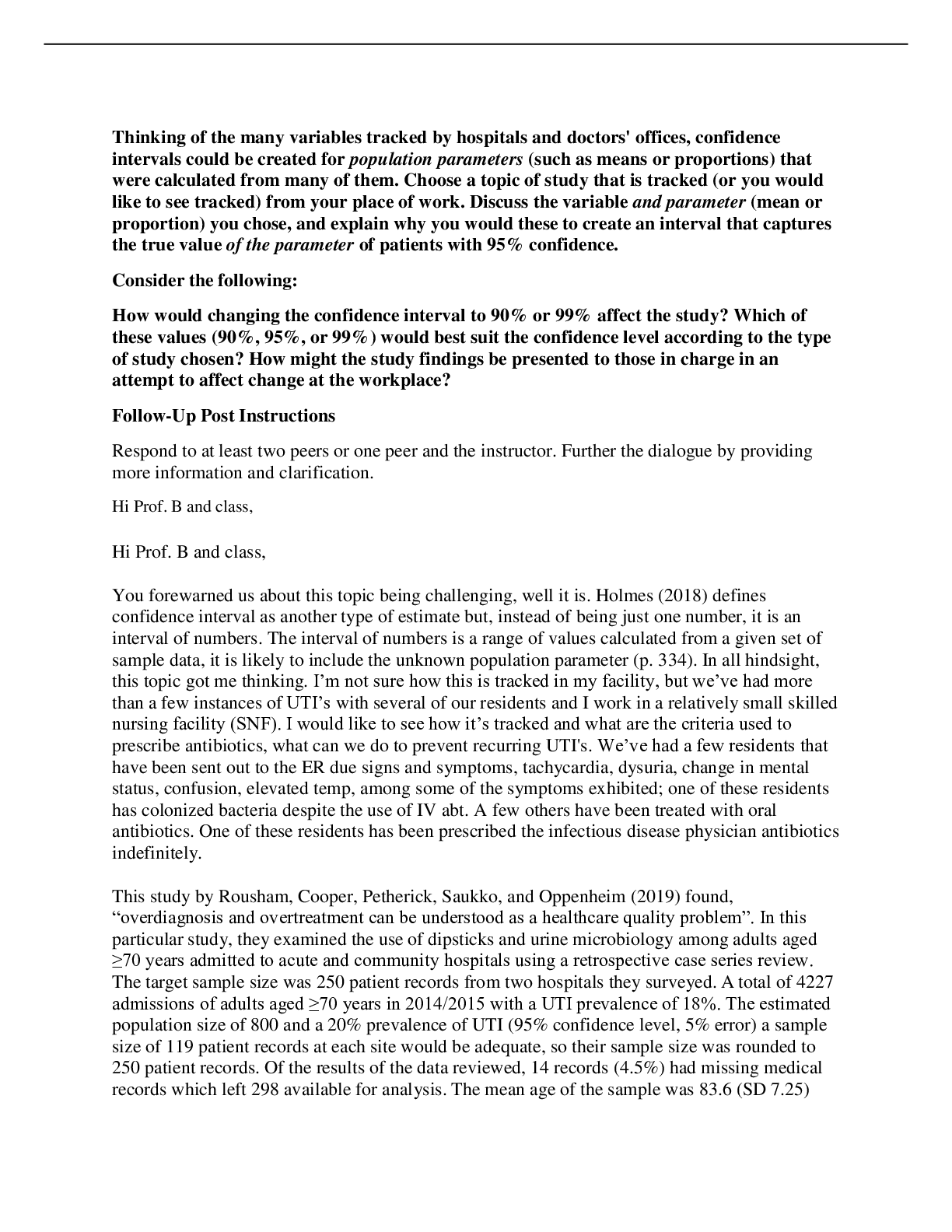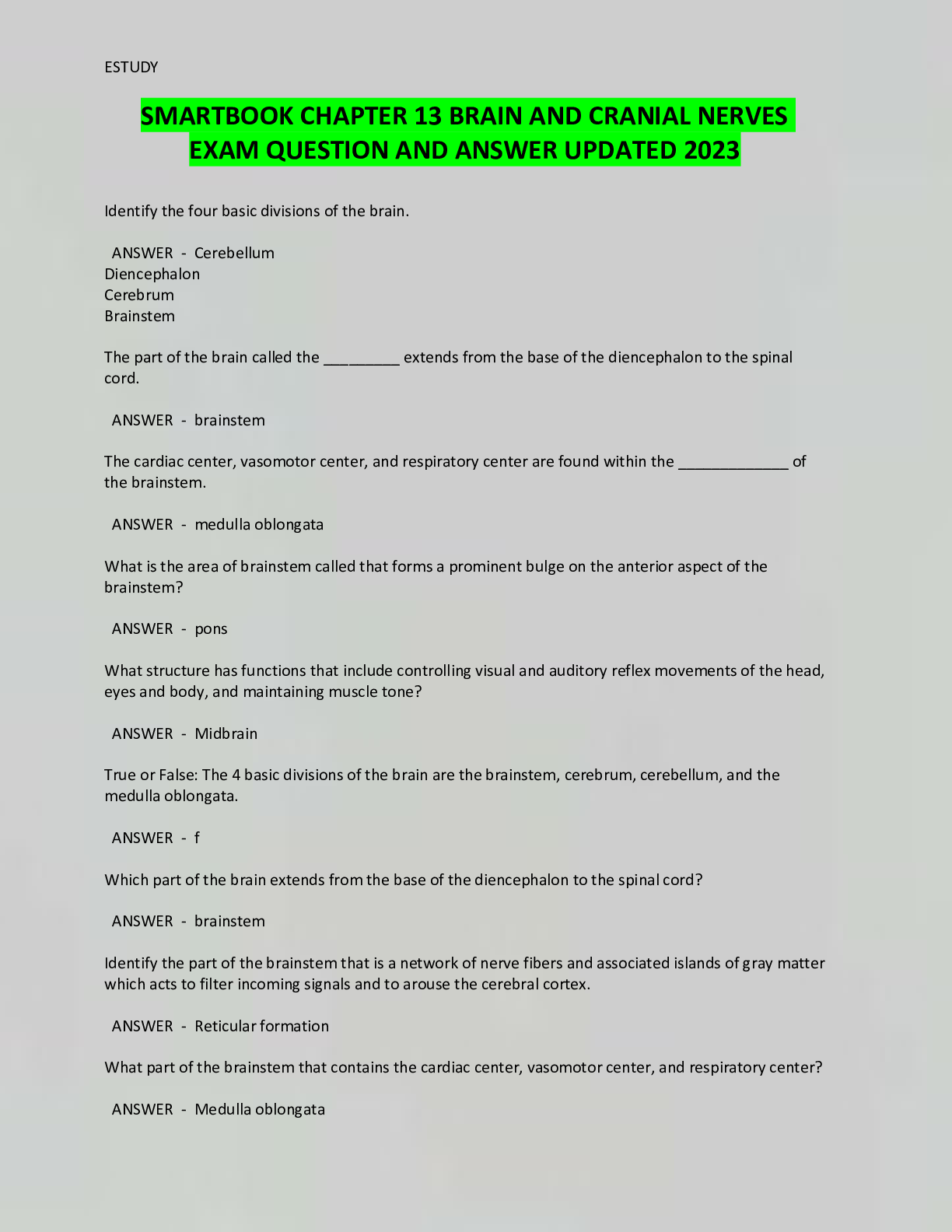Anatomy and Physiology - A&P 1 > QUESTIONS & ANSWERS > BIO201_MH_V3: Spinal Cord, Spindal Nerves, Brain and Cranial Nerves (All)
BIO201_MH_V3: Spinal Cord, Spindal Nerves, Brain and Cranial Nerves
Document Content and Description Below
BIO201_MH_V3 Topic 12: Spinal Cord, Spindal Nerves, Brain and Cranial Nerves Started on Thursday, September 9, 2021, 12:36 PM State Finished Completed on Thursday, September 9, 2021, 1:16 PM ... Time taken 39 mins 53 secs Grade 31.50 out of 35.00 (90%) Question 1 Correct 1.75 points out of 1.75 Flag question Question text Match the nerve with the appropriate description. Tibial nerve Select one: a. innervates the iliopsoas, sartorius, and quadriceps femoris b. innervates muscles of the pelvic floor c. innervates the muscles that adduct the thigh d. innervates the anterior and lateral muscles of the leg e. branches to form the medial and lateral plantar nerves Question 2 Correct 1.75 points out of 1.75 Flag question Question text Branches of the ____ nerve are anesthetized before a doctor performs an episiotomy for childbirth. Select one: a. genitofemoral b. gluteal c. cutaneous femoral d. pudendal e. common fibular (peroneal) Question 3 Correct 1.75 points out of 1.75 Flag question Question text What does "E" represent? Select one: a. central canal b. ventral root c. dorsal root ganglion d. spinal nerve e. dorsal root Question 4 Correct 1.75 points out of 1.75 Flag question Question text The epineurium Select one: a. surrounds nerve cell bodies. b. surrounds individual axons and their Schwann cells. c. bundles axons into fascicles. d. bundles fascicles into nerves. e. bundles fascicles into axons. Question 5 Correct 1.75 points out of 1.75 Flag question Question text What does "A" represent? Select one: a. central canal b. ventral root c. dorsal root ganglion d. spinal nerve e. dorsal root Question 6 Correct 1.75 points out of 1.75 Flag question Question text Reflex arcs Select one: a. are capable of receiving a stimulus and yielding a response. b. are the basic structural units of the nervous system. c. occur primarily in the cerebral cortex of the brain. d. involve inhibitory neurons. e. do not involve the spinal cord. Question 7 Correct 1.75 points out of 1.75 Flag question Question text The reflex that prevents excessive tension in a muscle is the Select one: a. stretch reflex. b. withdrawal reflex. c. Golgi tendon reflex. d. reciprocal reflex. e. crossed extensor reflex. Question 8 Incorrect 0.00 points out of 1.75 Flag question Question text Match the term with the most appropriate description. Associated with withdrawal and stretch reflex Select one: a. stretch reflex b. golgi tendon reflex c. withdrawal reflex d. crossed extensor reflex e. reciprocal innervation CORRECT Question 9 Correct 1.75 points out of 1.75 Flag question Question text Match the disorder with its description. Neuralgia Select one: a. pain radiating down the back of the thigh and leg b. stiffness in the neck and headache c. inflammation of a nerve d. pain along a nerve tract e. loss of sensation Question 10 Correct 1.75 points out of 1.75 Flag question Question text Match the disorder with its description. Meningitis Select one: a. pain radiating down the back of the thigh and leg b. stiffness in the neck and headache c. inflammation of a nerve d. pain along a nerve tract e. loss of sensation Question 11 Correct 1.75 points out of 1.75 Flag question Question text Which of the following activities would stimulate the reticular formation? Select one: a. a warm bath b. a clock radio coming on in the morning c. a long lecture in a darkened auditorium d. eating a big meal e. getting a back rub Question 12 Correct 1.75 points out of 1.75 Flag question Question text During brain surgery, the superior portion of the postcentral gyrus of a patient is stimulated. What do you expect the patient to do? Select one: a. Flex his fingers. b. Talk to the surgeon. c. Smile. d. Feel pressure on his toes. e. Move his hand. Question 13 Correct 1.75 points out of 1.75 Flag question Question text Injury to the thalamus would Select one: a. cause us to stop breathing. b. affect body temperature regulation. c. affect pH regulation. d. prevent puberty. e. affect sensory projection to the cerebral cortex. Question 14 Correct 1.75 points out of 1.75 Flag question Question text From which embryonic brain region does the medulla oblongata form? Select one: a. telencephalon b. diencephalon c. mesencephalon d. metencephalon e. myelencephalon Question 15 Correct 1.75 points out of 1.75 Flag question Question text Smooth, flowing movements are the result of fine motor coordination in the Select one: a. anterior vermis. b. cerebellar peduncles. c. lateral cerebellar hemispheres. d. flocculonodular lobe. e. arbor vitae. Question 16 Correct 1.75 points out of 1.75 Flag question Question text The "thermostat" or nucleus that monitors blood temperature is located in the Select one: a. hypothalamus. b. midbrain. c. pons. d. thalamus. e. brainstem. Question 17 Incorrect 0.00 points out of 1.75 Flag question Question text Which of the following cranial nerves is exclusively sensory? Select one: a. vestibulocochlear (VIII) CORRECT b. hypoglossal (XII) c. trochlear (IV) d. facial (VI) e. trigeminal (V) Question 18 Correct 1.75 points out of 1.75 Flag question Question text This is a lateral view of the brain. What does "B" represent? Select one: a. temporal lobe b. cerebellum c. frontal lobe d. occipital lobe e. parietal lobe Question 19 Correct 1.75 points out of 1.75 Flag question Question text Which of the following is a function of the hypothalamus? Select one: a. initiates voluntary movements b. involved in psychosomatic illnesses c. control of balance d. unconscious swinging of the arms while walking e. perception of sensation Question 20 Correct 1.75 points out of 1.75 Flag question Question text Which of the following brain areas serves as the major control center of the autonomic nervous system and endocrine system? Select one: a. hypothalamus b. midbrain c. pons d. thalamus e. brainstem [Show More]
Last updated: 1 year ago
Preview 1 out of 12 pages
Instant download
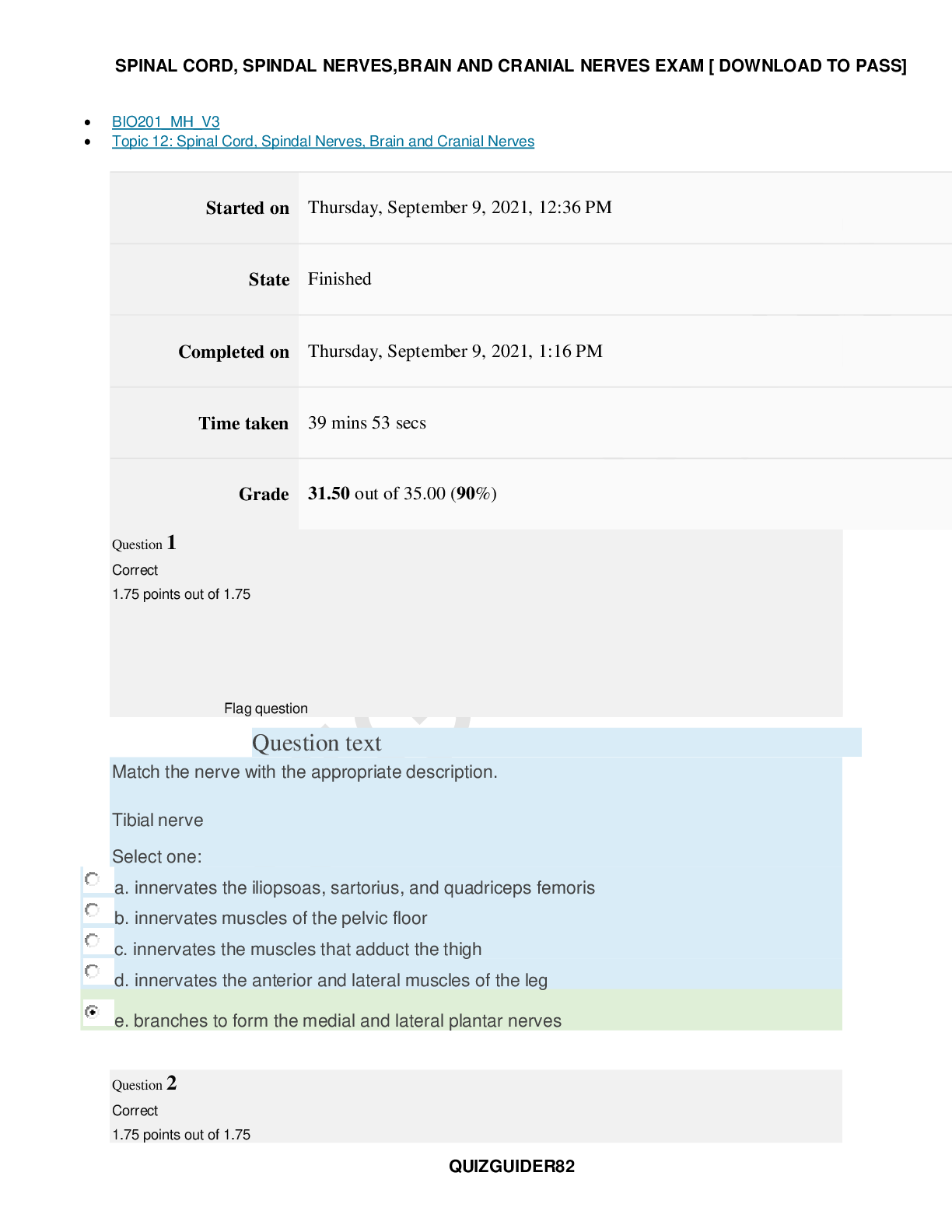
Buy this document to get the full access instantly
Instant Download Access after purchase
Add to cartInstant download
Reviews( 0 )
Document information
Connected school, study & course
About the document
Uploaded On
Dec 03, 2022
Number of pages
12
Written in
Additional information
This document has been written for:
Uploaded
Dec 03, 2022
Downloads
0
Views
77
